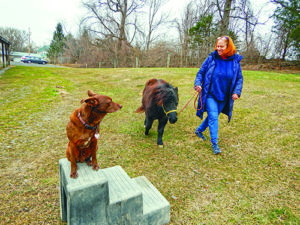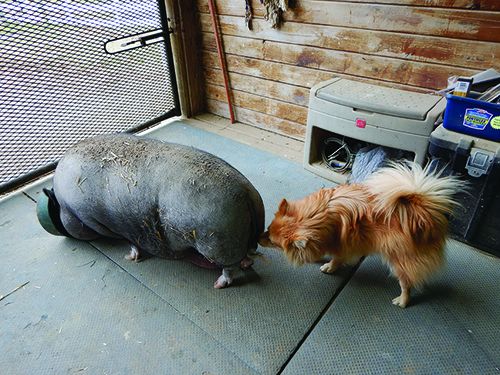As a lifelong animal lover and the owner of a dog-training and horse-boarding facility, I’ve had countless opportunities to practice multi-species introductions – including many in just the past two years!
About two years ago, my husband and I acquired a Pomeranian/American Eskimo Dog-mix, Sunny. We were told that his previous adopters kept him for only three days because they were afraid he was going to kill their cats. We have two indoor-only cats in our family, but we adopted him anyway. We used gates that have cat-escape doors built into them and kept Sunny on leash for several days. Fortunately, our dog-savvy cats didn’t run from him, so he didn’t chase. It only took a few days of managed encounters and some counter-conditioning to convince him he had better things to do than harass the cats.
Given Sunny’s very strong chase arousal when he sees squirrels outside, however, I have no doubt he would give chase if he encountered an outdoor cat. It is very common for dogs to live in peace with their indoor cats and still chase and even kill an outdoor cat that runs from them.
We weren’t sure what to expect from Sunny when we adopted our pot-bellied pig, Dexter, four months after Sunny joined the family. Our Kelpie, Kai, had lived peaceably with a pig before, so we weren’t worried about his reaction to Dexter’s arrival; for his part, Dexter had lived with dogs before, so we figured those two would be fine. We did our first Sunny-Dexter introduction with Sunny on leash, and discovered that, other than being fascinated with Dexter’s rear end, Sunny was fine with a pig.

We had our biggest interspecies challenge five years ago, when we first brought home Kai, then just one year old. A herding breed, he was quite interested in our full-sized horses, but confined his herding behavior to trotting back and forth at their heels. The horses were accustomed to dogs, so I wasn’t worried about him getting kicked. Also, he kept careful watch on the horses’ hooves. For some reason, though, we had to put a lot more effort into teaching Kai to be calm around our miniature horse, Olivia. Kai barked at and tried to herd her when we led her from the barn – not acceptable. We found an easy fix: We taught Kai to “station” (get up onto, sit, and stay) on a mounting block while we led Olivia to and from her paddock. Eventually Kai’s barking diminished, and stationing was no longer needed.
These were all relatively easy fixes. It takes a lot more work and time to reprogram a dog who has a very strong predatory interest in an other-species family member – or even just a very high level of arousal in the presence of another species.






